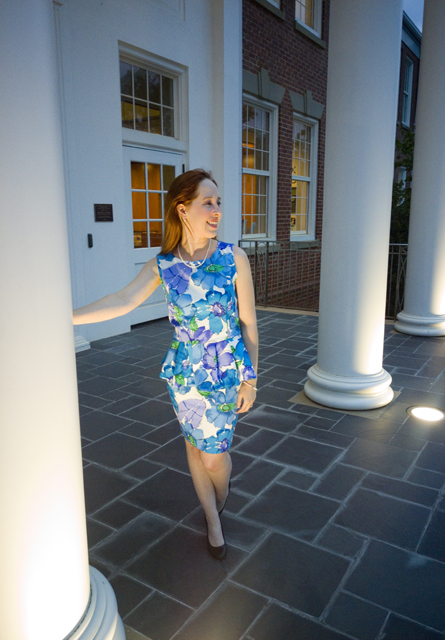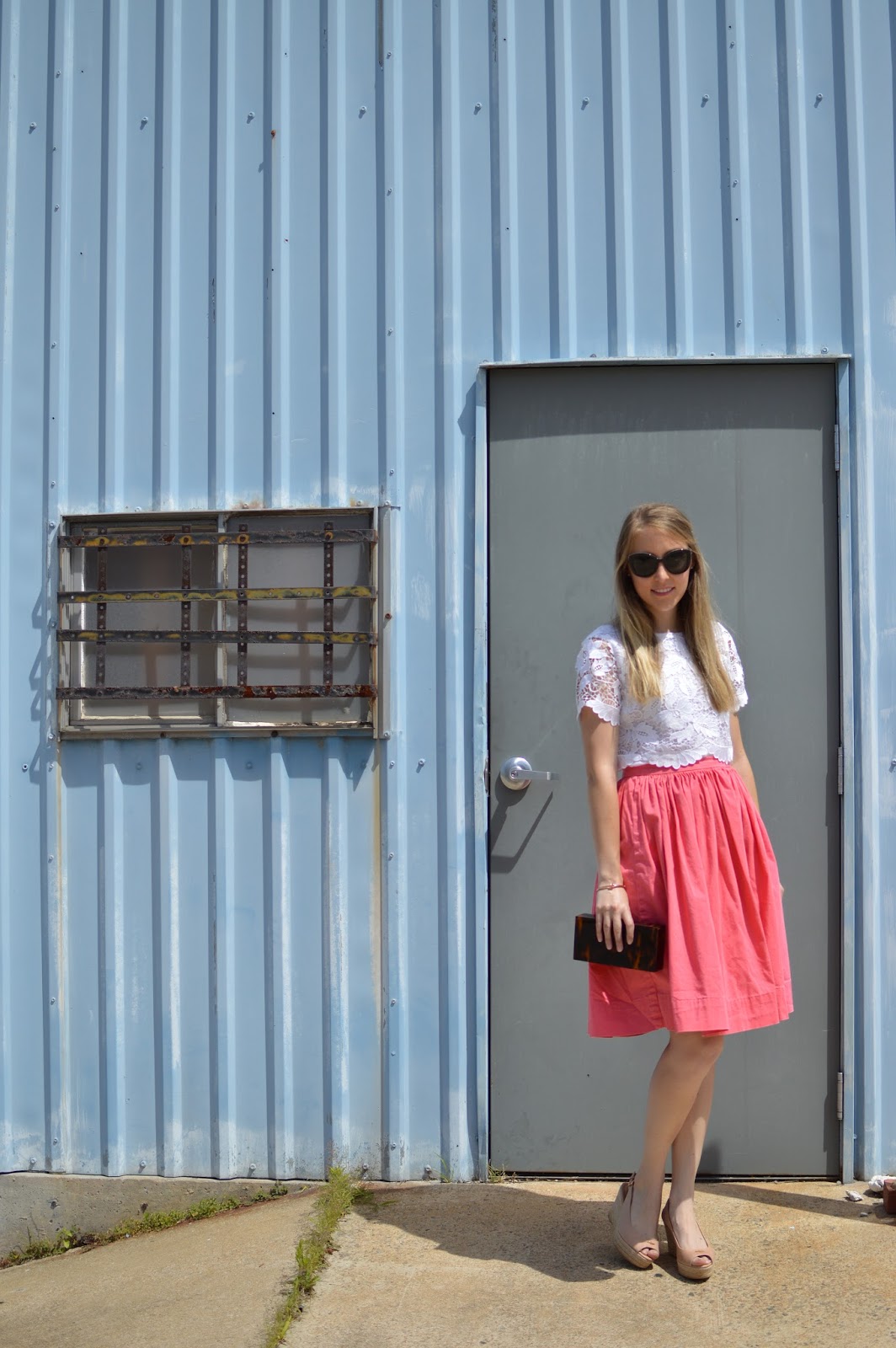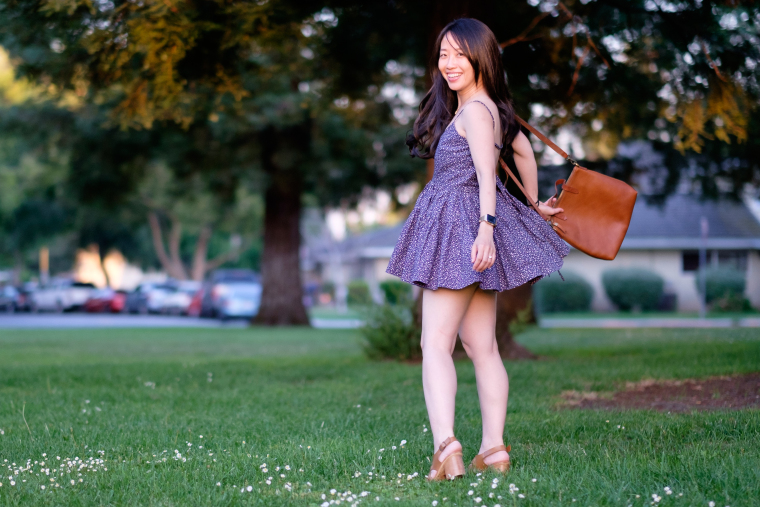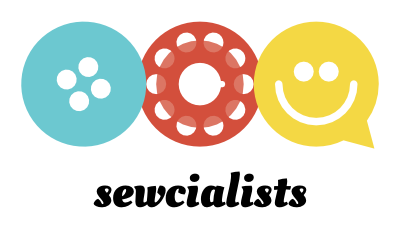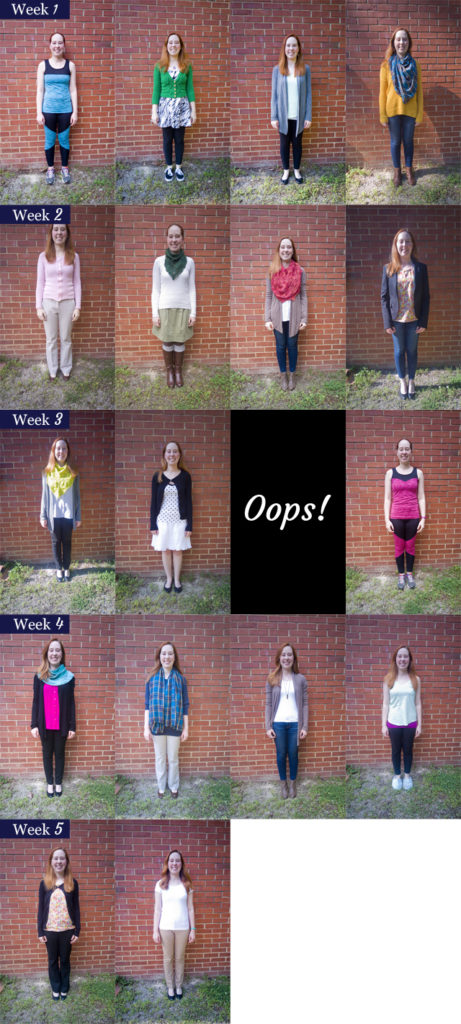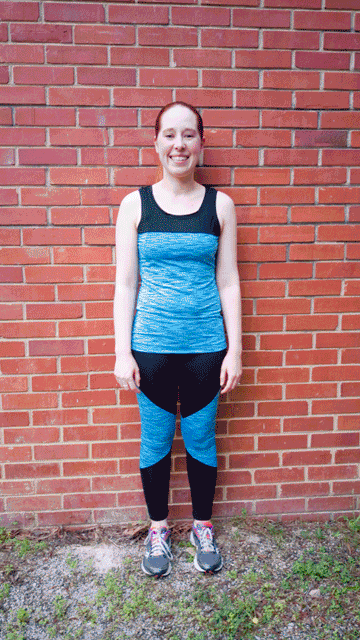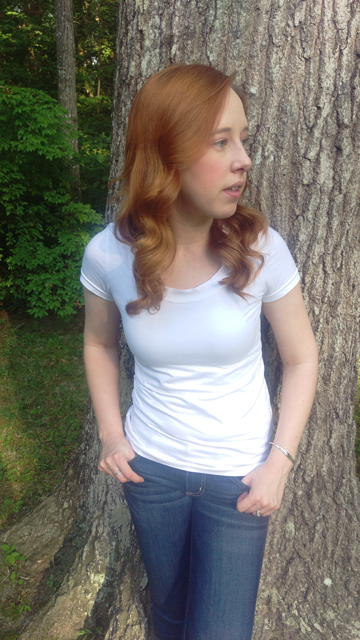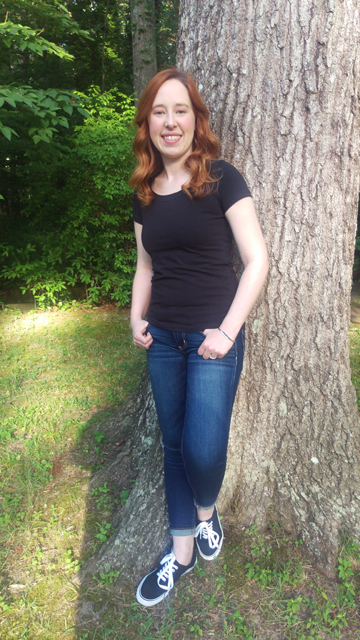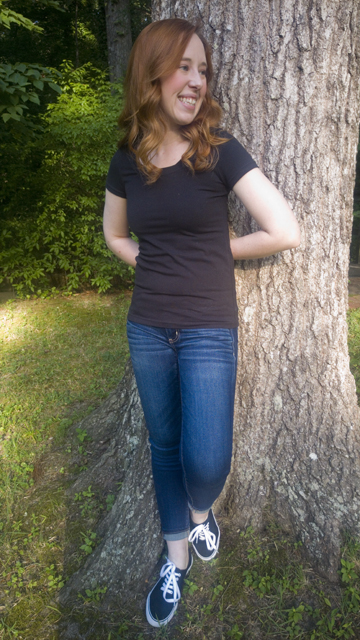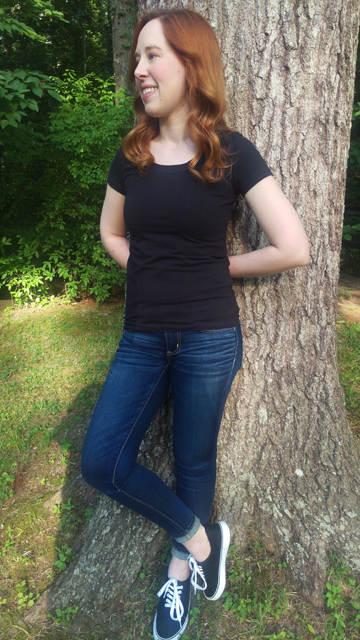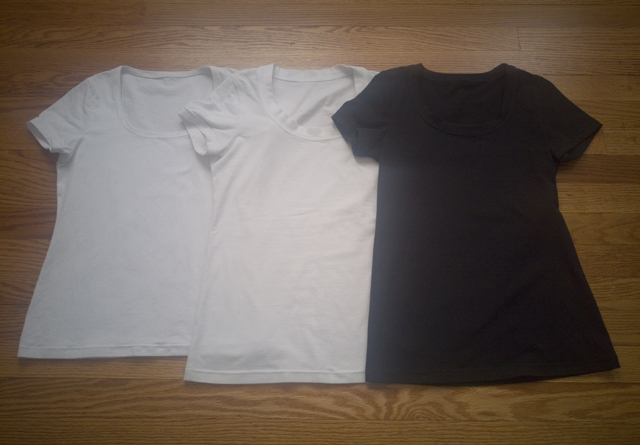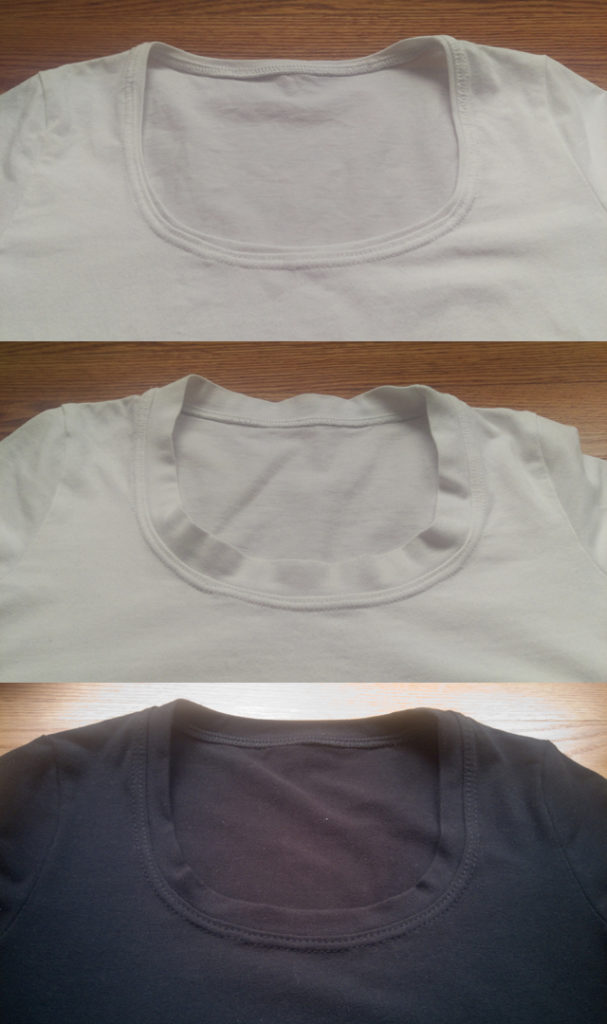Have you been following Tribute Month over on the Sewcialists blog? My own tribute went up earlier this week—check it out here to read how Erica Bunker inspired this outfit, and don’t forget to follow the blogs of all the creative and inspiring contributors who made Tribute Month possible! I can hardly wait for the next theme—having direction and a concrete deadline really helped to focus my sewing, especially when I came close to stalling out right before the finish.
Before these garments are too far behind me, it seems like a good idea to record some of the more technical details of what I did. I deviated significantly on both patterns, but I do hope to make them again, and I’d like the next versions to be even better.
First, the skirt. It’s Simplicity 1465 View C, a straight skirt with a waist facing, front and back darts, and a center back invisible zipper. I’ve said many times before that I’m not fond of skirts that sit the natural waist because they feel constricting to me, and because they tend to emphasize that my waist is not much smaller than my bust and hips, making it look thicker than it is and making my whole torso look rather straight-up-and-down. But I’ve also had minimal success at finding or altering patterns to be low-rise, and after ruining a lovely lightweight yardage of navy corduroy trying to make that modification, I decided to bite the bullet and give a natural-waisted skirt a try. I wagered that, since I was planning to make it in a dressier print, I’d probably only wear it for nicer occasions anyway, and if I didn’t love it, I’d only be wearing it for a few hours at a time a few times a year anyway.
I cut a straight size 12 based on my waist measurement, but pegged the bottom of the skirt by subtracting 1 inch at each side seam (4 inches total). My waist is a fraction larger than a 12, but after reviewing the pattern pieces I was confident that there was enough ease to cover that extra quarter-inch. In fact, after wearing the skirt out to take photos, I think that I could take the waist in a little on a future iterations. I don’t know if I could go down a full size, but I could probably shave a little off each side seam—and possibly a little more if I chose not to line it or chose a slightly stretchier fabric than the mid-weight stretch cotton sateen I used here.
The pattern is designed to be unlined, but I wanted the option to wear it with tights in cooler weather, so turned to Sunni’s BurdaStyle tutorials for how to create a vent, draft a vented lining, and sew a vented lining, but modifying my pieces slightly to keep the original waist facing. These instructions used to be on Sunni’s blog A Fashionable Stitch, and I vaguely recall them being easier to follow when I used them the first time. I managed to muddle through them with much reading, re-reading, and test-folding my fabric, but it does bug me (more than it should, to be honest) that they create a vent that is lapped in the opposite direction than usually you see in ready-to-wear: normally the satin stitches that tack the top of the vent in place create the appearance of the number 1. In future iterations, I’ll reverse my left and right back pattern pieces and back lining pattern pieces. I’ll also make the vent longer (taller?), because I find it shortens my walking stride a little more than I like.
One critical thing that’s not covered by the tutorial is attaching the lining to the skirt at the waist. The tutorial is written for the BurdaStyle Jenny skirt, which has a waistband, so you can follow all of the steps for attaching the lining to the skirt at the vent and then worry about attaching the lining to the skirt at the waist afterward. Because I was using a pattern with a facing instead of waistband, I figured out that I needed to attach the shell and lining at the waist first if I wanted to be able to get a clean finish, including understitching the waist facing to keep it lying flat. Once the waist was taken care of, then I could follow the instructions for attaching the lining to the vent, and then finally handle attaching the lining to the zipper tape so that it doesn’t get caught in the zipper.
And now, the top. It’s Simplicity 1425 View E, a sleeveless, princess-seamed top with a pleated peplum. Although my measurements put me in a size 12, I cut a size 10 after seeing that the pattern has 3.5″ of ease at the bust and 4.5″ of ease at the waist. If/when I make it again, I’ll go down a size; with such a contoured style, and especially in a fabric with stretch, I’d like it to fit more closely to my body than it does.
When I pulled this pattern from my stash to sew, I actually thought it was designed with a back zipper, and it wasn’t until I had cut out all the pieces and was skimming the instructions before starting to sew that I realized it has buttons. I can’t imagine making it that way; it’s not loose enough to render the buttons purely decorative, and having to do them up behind my own back—with fabric loops instead of buttonholes, no less!—is not my idea of fun.
Despite some initial trepidation about using a separating metal zipper, the entire process was painless, easier than installing an invisible zipper. I used an 18″ zipper, which ended up about 3.5″ shorter than the length of the top. I knew that the top of the skirt would come up higher than the bottom of the zipper, and if I’m wearing it casually with low-rise jeans I don’t mind the possibility of flashing a tiny sliver of skin, but if that’s a concern then definitely consider getting a longer zipper and shortening it.
For both pieces, I finished things cleanly and invisibly everywhere I could. The skirt lining has French seam; the skirt shell has serged seams (I thought Hong Kong seams, while lovely, would be too bulky and hidden anyway); the cut edge of the skirt hem is covered with a fun purple grosgrain ribbon and blindstitched in place. The top has bias facings at neck, arm, and peplum hem, all blinstitched as well. I enjoy hand-sewing, but next time I’ll draft an all-in-one facing for the bodice.
On the whole, I’m very pleased with how the entire outfit came out, and I’m very much looking forward to wearing it to a professional event in October. It’s also restored some of my desire to sew with wovens (or stretch wovens, at least), because it proved that I could find middle ground between a comfortable fit and a flattering silhouette. I doubt they’ll overtake knits in my wardrobe, but at least I can regard them with a little less prejudice.

